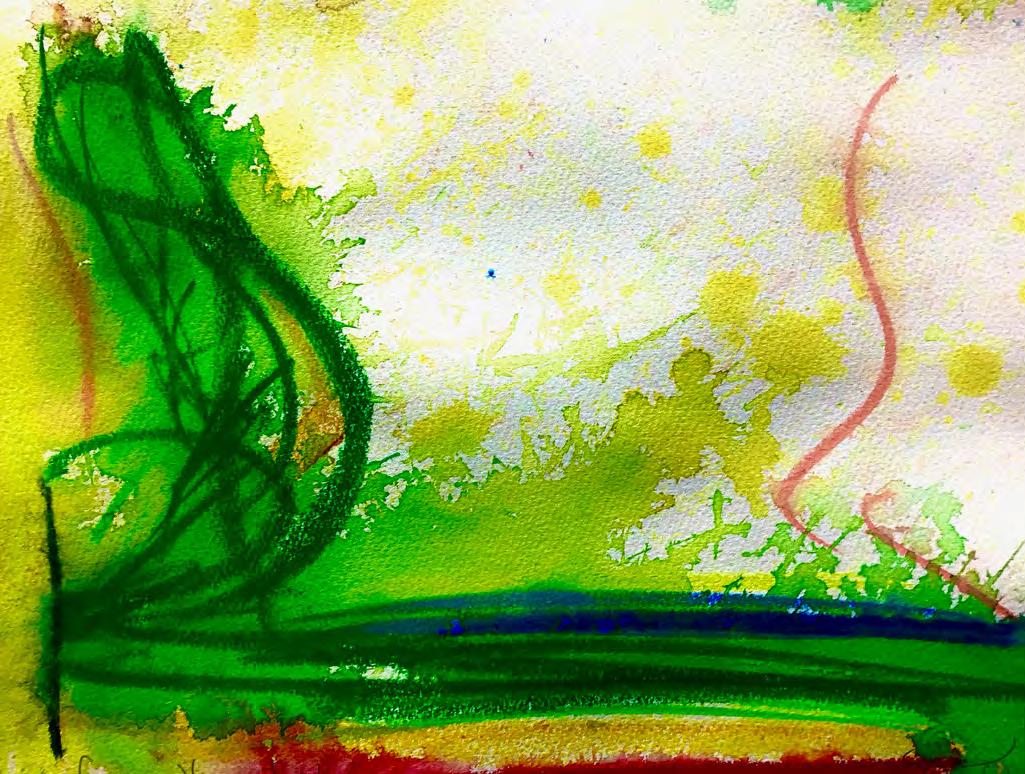Locks in Lockdown: depictions of Rapunzel in illustrated works from the Golden Age to the present Miss K Lloyd (CR, Artist-in-Residence) We are all familiar with the story of a girl, locked in a tower by a wicked witch after her parents had taken magical herbs from the witch’s garden. Isolated for years, Rapunzel’s golden locks are left to grow long. The witch, and later a handsome prince, pay her visits by climbing up these tresses. The tale of Rapunzel had a reawakening with the Disney film Tangled in 2010, but the story has been around for nearly 400 years. Petrosinella, meaning ‘little parsley’, was written by Giambattista Basile (1566 to 1632), a Neapolitan poet, and was posthumously published in 1634. In 1812, the clever Grimm Brothers brought it to public acclaim, along with other stories, in their first fairy tale collection. Since then, many artists and illustrators have been inspired by the story and have reworked it in their own particular style, for their own particular period, and more often than not in Grimm editions. I will look chronologically at a selection of art and illustrations inspired by the story. I will explore how the tale is inherently visually appealing; how it has inspired some of the most famous artists and illustrators of the 19th and 20th centuries; how hair, whether plaited or loose, lends itself well to pattern; and therefore, how both black and white, as well as colour illustrations, can be effective; and finally, how varying the artists interpretations have been: whether romantic, chintzy, sinister, light-hearted, humorous or quirky. The Golden Age of illustration (which runs parallel with the pre-Raphaelite era) spans from roughly 1850 to 1925. Advances in technology in the mid-19th century and a rise in highly skilled illustrators, meant there was a period of unprecedented excellence, both in book and magazine illustration; books with good illustrations could be produced at relatively low cost. The publication of Alice in Wonderland in 1865 with Sir John Tenniel’s timeless illustrations cemented the power of book illustration. The late 19th century also covers the Art Nouveau movement from 1890–1910. Aiming to break with traditional art conventions, it was rooted in natural forms and is distinguished by organic sinewy swirls. Perfect for those Rapunzel curls. There is one striking painting of Rapunzel from 1905 by the German painter Heinrich Lefler (1863–1919) (Plate 1) who depicted her with positively psychedelic lurid orangey-yellow locks. I want some of what she’s having. Florence Harrison’s (1877–1955) (Plate 2) colour illustration of 1910 has similar zing. In 1900 the renowned Arthur Rackham (1867–1939) (Plate 3) illustrated – in what seems to be a rite of passage for many dedicated illustrators – black and white illustrations for a Brothers Grimm edition. In 1909 he developed this into his signature watercolour style in some 40 colour plates. Walter Crane (1845 to 1915) (Plate 4) was an English artist who produced wooden engraving illustrations for a 1914 Grimm edition. One can still feel the influence of the Pre-Raphaelites here, the poignant, romantic era of the late 19th and early 20th century about to come to an abrupt end with the onset of war. There is a nod to the mediaeval with the structured vignettes in each corner, depicting scissors cutting the lock of hair, and the moon (a feminine symbol and suggesting beauty) visible through the clouds. It is interesting to compare Crane’s illustration with Louis Rhead’s (1857 to 1926) of 1917 (Plate 5). The position of the tower, the landscape and sense of perspective to the left, and the Prince climbing up the tower. Although Rhead’s illustration is in ink, he still produces the same feeling of a woodcut. Note the almost identical bird to the right of the Prince in both images. Note also one of the main differences in the styling of the hair: Crane’s Rapunzel has loose locks, whereas Louis’s has plaited hair; both work, however, due to the joyous sense of pattern, rhythm and movement. From 1914, Johnny Gruelle (1880-1938) (Plate 6) produced 11 full colour plates for the Brothers Grimm. His chintzy Rapunzel scene was created in 1922 and is probably one of the most well-known Rapunzel illustrations, decidedly post-war and escapist, and fulfilling the Disney fantasy of the pink roofed tower set amidst a densely set, thick dark forest, as Disney was only just establishing himself. 121
In Time of Lockdown: Reflections on Locks, Lockdown, Isolation

Turn static files into dynamic content formats.
Create a flipbookArticles inside
Issuu converts static files into: digital portfolios, online yearbooks, online catalogs, digital photo albums and more. Sign up and create your flipbook.





































